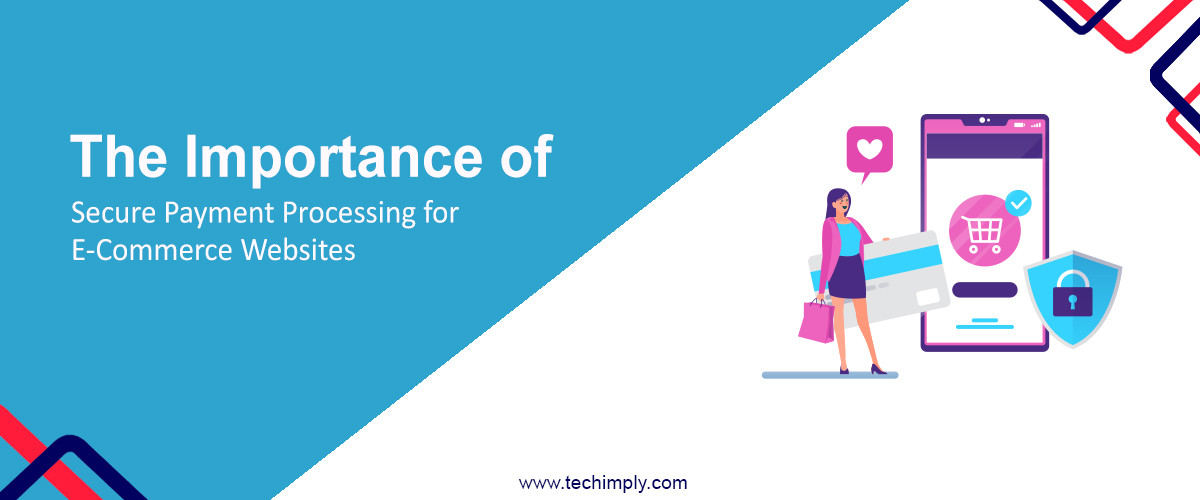As an e-commerce business owner or someone who is considering starting an online business, you're probably already familiar with the benefits of selling your products or services online.
You can reach a global audience, operate with lower overhead costs, and offer greater convenience to your customers. However, with the convenience of e-commerce also comes the need to prioritize secure payment processing. And to get secure payments from your customers, you can use PayPal, Amazon Pay, Apple Pay, and Square for online payments.
In this article, we'll take a closer look at the risks of insecure payment processing, the key elements of secure payment processing, best practices for e-commerce software, and how to balance security with usability.
By the end of this article, you'll have the knowledge you need to ensure your customers' financial security and protect your business from possible financial losses and reputational damages.
So, without further ado, let's get started.
Risks Associated with Insecure Payment Processing
Payment fraud is a growing concern for both customers and businesses. There are many different types of payment fraud, including identity theft, chargebacks, and stolen credit card numbers. These types of fraud can lead to significant financial losses for businesses and cause great stress and inconvenience for customers.
In addition to fraud, businesses that do not properly secure their payment processing systems put themselves at risk of data breaches, which can result in a loss of customer trust and costly lawsuits.
In previous years, there have been many high-profile payment security breaches, including the Target breach in 2013, which affected millions of customers, and the Equifax breach in 2017, which exposed the personal information of 147.9 million Americans.
The costs of payment fraud and security breaches can be high, with one report estimating that the average cost of a data breach is $4.24 million.
Hence, as a business eCommerce platforms owner, you are responsible for protecting your customer's financial information and ensuring that your business follows best practices for secure payment processing.
The Core Elements of Secure Payment Processing
To prevent payment fraud and data breaches, you must implement a range of security measures on your website to ensure secure payment processing.
Following are some core elements of secure payment processing that you should consider implementing:
-
Encryption
Encryption is the process of converting sensitive data into a code to prevent unauthorized access during transmission. The payment processing systems on your website should use robust encryption methods to ensure that customer data remains secure throughout the payment process.
-
Secure Sockets Layer (SSL) Certificates
With SSL certificates, web servers, and browsers can communicate securely. So, as an E-commerce business, you must have an SSL certificate to establish a secure connection between the website and the payment gateway.
-
Payment Gateway
A payment gateway is a third-party service that facilitates payment transactions between a customer and an e-commerce business.
The payment gateway you would consider suing should be PCI DSS (Payment Card Industry Data Security Standards) compliant and use secure encryption methods to ensure the security of customer payment information.
-
Tokenization
Another smart way to make payment processing secure is to use tokenization. It is the process of replacing sensitive information with non-sensitive information. A secure payment processing system employs tokenization to protect customer information by replacing the primary account number with a unique identifier.
Here's how this works: When a customer pays for a product on an e-commerce website, their payment information (such as their credit card number) is sent to a payment gateway, which processes the payment and sends the information to the merchant's bank.
However, in the case of tokenization, instead of transmitting the customer's payment information in its original form, the payment processing system replaces it with a token with no intrinsic value. The token is then sent through the payment gateway and to the merchant's bank, where the bank uses the token to retrieve the original payment info.
-
Fraud Detection Tools
With fraud detection tools, you can detect and prevent fraudulent transactions on your e-commerce website. These tools analyze transaction data in real-time to identify suspicious behavior, such as multiple failed attempts to enter payment information or transactions from high-risk locations.
-
3D Secure Authentication
3D Secure, also known as Three Domain Secure, is a security protocol that involves three domains: the bank, the payment processing technology, and the card-issuing bank. It prevents fraudulent transactions from occurring without the presence of a bank card. When you implement 3D Secure, the responsibility for preventing fraudulent transactions shifts from your business to the bank issuing the card.
Now you've got a better understanding of the core elements of secure payment processing, So let's move on to some of the best practices to implement these core elements on your e-commerce website.
Best Practices to Ensure Secure Payments for Your E-Commerce Websites
When it comes to e-commerce business, the following are some of the best practices you can follow to ensure that your payment processing system is secure.
- Clear Payment and Refund Policies: Providing easy-to-understand and detailed payment and refund policies can help you build trust with your customers and reduce the risk of chargebacks.
- Educating Customers About Payment Security: Keep this thing in your marketing strategy, as informing customers about payment security and fraud prevention can reduce the risk of fraud and increase customer confidence.
- Employee Training: Your employees should know how to identify warning signs of fraud, such as unusual transaction patterns or discrepancies in customer information. To avoid payment fraud, train your staff to recognize potential payment fraud and respond appropriately.
- Integration of Fraud Detection Tools: You can also consider implementing fraud detection software that automatically flags potentially fraudulent transactions. And some of the prominent examples are SEON, Signifyd, Kount, etc.
- Up-to-Date Security Technologies: Make sure your website and payment processing system are up-to-date with the latest security technology. This includes regular software updates, as well as regular security assessments to identify potential vulnerabilities.
By incorporating these best practices for secure payments on your e-commerce website, you can easily reduce the risk of payment fraud and data breaches and build trust with your customers.
Wrapping Up
In an age when everything is becoming digital, you should prioritize secure payment processing on your e-commerce website since data breaches and payment fraud can devastate your business.
However, implementing the right security measures and following best practices can reduce the risk of these types of incidents.
In short, payment security is imperative to the long-term success of your business. By investing in the right technology, training your employees, and following best practices, you can build trust with your customers and protect yourself from the financial and reputational damage of payment fraud and data breaches.


.jpg)



